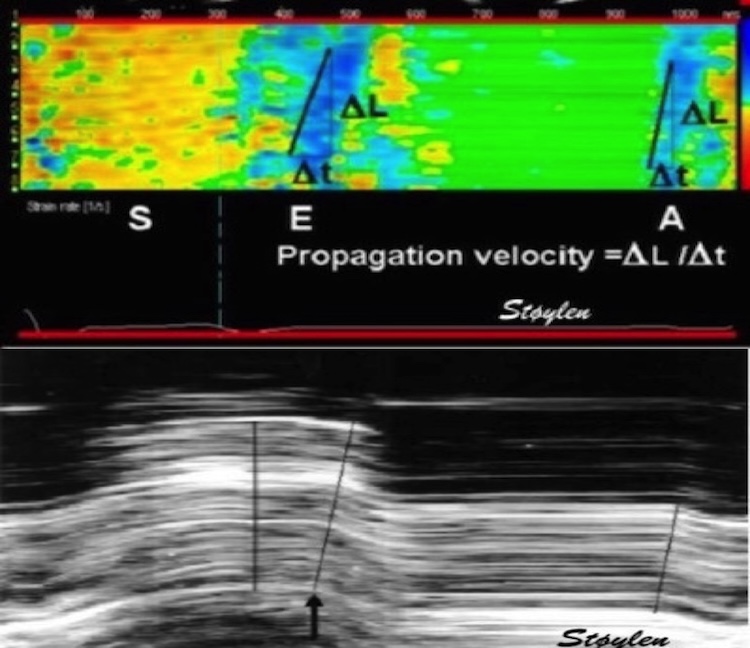#Cardiotwitter. Seems that the interest in the #mitral_annular_dynamics during pre ejection would justify a continuation.
1/ Firstly, I’ll return to the protosystolic peak velocity, it’s occurring before MVC. Thus there is no such animal as peak isovolumetric velocity or acceleration. But does it matter, what we call it, and what does the peak protosystolic velocity mean physiologically? 

2/ It is the peak velocity of longitudinal shortening before MVC. At this point, the load is low (= LA pressure), so it is related to the velocity of unloaded shortening. But this occurs before peak rate of force development, and is not a contractility measure. 

3/ It is also dubious that the peak protodiastolic velocity is the peak velocity of unloaded shortening. Protodiastolic motion is terminated by MVC, which will influence the peak. Thus it is unlikely to be useful.
4/ What about IVC duration? As shown, it can be measured by TDI, although older publications have got it wrong, by including protosystole. Remember, true IVC is measured by Doppler flow. with sample volume between LVPT and mitral orifice. 

5/ IVC duration, is inversely related to the (mean) rate of tension (pressure) development, and directly related to the SBP, as, for a given rate of force development, it takes longer time to reach a higher pressure. Thus, IVC is both pre- and afterload dependent.
6/ The closest measure to contractility, is the peak rate of force development, which can be measured by peak dP/dt. It occurs during IVC. As this is before AVO, it is actually afterload independent, but still, of course preload dependent by the Frank-Starling mechanism.
7/ Remember, if there is a small MR, it is measurable by Doppler, as long as the MR do not cause LA pressure rise. 

unroll @threadreaderapp
• • •
Missing some Tweet in this thread? You can try to
force a refresh

















